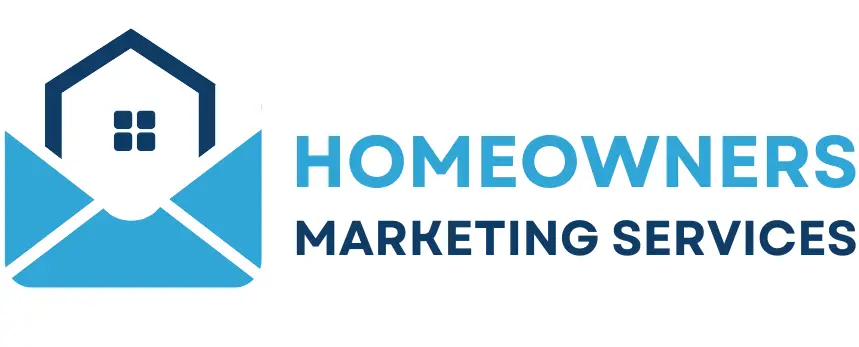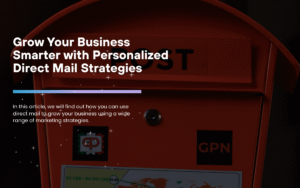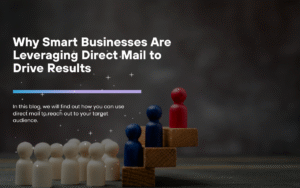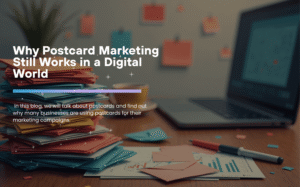Unlocking ROI with the Right Strategies and Lists
The marketing landscape nowadays is dominated by digital technologies and one may assume that direct mail has become outdated, even more so, for B2B marketers. However, this is a false assumption; direct mail for B2B is in fact alive and is very effective if used strategically. The correct approach combined with high-quality business direct mail lists can make all the difference with your campaign generating leads, building brand awareness, and driving ROI like never before. In fact, according to the 2022 State of Direct Mail report, 67% of marketers agreed that direct mail provided the best ROI when compared to other channels they had used.
Read on as we explore some of the tried-and-true best practices in B2B direct mail marketing so that your business can get a leg up and beat the competition.
1. Start with Quality Business Direct Mail Lists
The base of planning and achieving a successful direct mail marketing campaign comes down, mostly, to the list you utilize. The more accurately targeted your business direct mail lists, the better the results you attain. Ideally, a good list should be personalized and have relevant filters, like the industry type, business size, job titles, location, and purchasing power.
A poor-quality list would mean a waste of resources; when your direct mail lists are better tailored to your ideal customer profile, you stand a better chance of your message reaching the decision makers who will act. About 91% of buyers are more likely to take your products or services if it is relevant to them.
Tip: Ensure that you choose a provider who specializes in direct mail marketing lists, more specifically, someone who can segment based on your campaign needs, whether it’s new business registrations, industry-specific niches, or company growth in terms of expansion or hiring activity.
2. Personalization Still Matters—Even in B2B
Consider personalizing your message; We know in B2C that approximately 80% of consumers are more likely to heed a call to action (CTA) if they get a rather personalized experience, and after all, B2B buyers are human too, they act as consumers in their private life, thus more likely to let their personal experience affect their professional judgement. This method is a significant portrayal of the fact that you have done “your homework” and understand the needs of the businesses whom you seek to make into a client. You should include dynamic fields like company name, recipient title, or industry-specific pain points in your content.
Moreover, keep in mind the value of personally addressing your target audience rather than the generalized and obvious “Dear Business Owner” prefix. Instead, consider something more engaging like: “Hi Sarah, we help marketing directors like you streamline lead gen.”
Adding a personal touch to a tangible, physical mail piece, will foster trust and increase engagement.
3. Craft a Compelling Offer
Next, you need to provide a call to action that is bound to generate action. It could be a limited-period discount, free trials, or access to exclusive industry data. When you add a certain amount of urgency, it helps to increase the offer’s value and hasten call to action.
For B2B direct mail, this could be in terms of:
- Free consultation
- Case study covering your contribution to a similar businesses
- Industry-specific report or white paper
Ensure that the offer is closely in line with the needs of the business area or segment that you are targeting through your direct mail marketing lists.
4. Design for Readability and Impact
Pay due attention to the design and draft of the message; a good design will make sure that it does not get thrown away without being read. Go for a clean layout that also has a strong visual hierarchy- headline, subhead, CTA.
Best practices include:
- Clear fonts (no hard-to-read script or tiny print)
- High-quality images (preferably branded or industry-specific)
- Use of white space for easier scanning
- Highlighted benefits with bullet points
Now, you must also choose some format that is suited to your message, be it postcards meant for small promos or letters that are for more formal introductions.
5. Track, Test, Optimize
The difficulty of measuring the success or response is one of the great misconceptions about B2B direct mail marketing. But this isn’t true, by the means of custom URLs, QR codes, and promo codes, it is possible to track the engagement of specific campaigns or segments. Furthermore, by tracking the delivery of mail, you can also plan follow-ups, customer service, and more.
Split testing comes of great importance as well. You can test the variations of:
- Headlines
- Offers
- List segmentation
- Mail formats
Actual data will help you refine your methods, and through this, you can improve your performance over time.
6. Integrate Direct Mail with Digital Campaigns
High performing B2B campaigns owe their success to the blending of various channels or as otherwise called; omnichannel campaign strategy. If you use direct mail for B2B as the main channel and other mediums as secondary, like email follow-ups, LinkedIn outreach, or even retargeted display ads.
For instance:
- Send a direct mail piece introducing your product or service.
- Follow up with a personalized email referencing the mailer.
- Connect on LinkedIn with the same contact.
- Serve a display ad reinforcing the same message.
By using this approach of multi-touchpoint approach, you can amplify brand recall and response.
7. Timing is Everything
With B2B direct mail, the most important key to greater success comes with timing your outreach with key business events. This includes:
- New business formation
- Small business expansion (new location, incorporation or DBA)
- End-of-quarter budgeting
- Start of a fiscal year
- Industry-specific trade shows or seasonal peaks
Make sure that your business direct mail lists are updated and verified regularly, such as those for tracking recently incorporated businesses or those businesses that are expanding. This will help you trigger at the right moment, when you can aid them in their interest at the highest and allowing you greater conversion rates.
8. Stay Compliant and Respectful
Now that you have taken care of all of this, it is essential to ensure taking the best practices into consideration. Also, if desired, you may include an opt-out contact information. Thus, you can avoid the costs of direct mail to businesses that have opted out or the data is outdated, it can impact your business in a negative way and cause marketing budgets waste and inefficiencies.
Remember, you can either make it a regular practice to update and clean your direct mail marketing lists or choose a provider who employs hygiene practices and guarantees the freshness, accuracy and therefore, the deliverability of your list.
Conclusion: Direct Mail is a B2B Power Move
While you may perceive direct mail as “old school”, by using it and applying smart targeting and creativity, it will turn into your secret weapon and that of any modern B2B marketer. Ranging from making use of accurate business direct mail lists to incorporating the digital touchpoints and testing campaigns, you stand to benefit from endless options and opportunities.
Be it the beginning of your strategy or the process of its refinement, by making use of these best practices, you will make certain that your B2B direct mail marketing campaigns are effective, measurable, and ROI-positive.
Need High-Quality Business Direct Mail Lists?
Partner with us at Homeowners Marketing Services, where our industry experts specializing in tailored direct mail marketing lists for B2B success will help you make the difference. Fresh leads, accurate targeting, and flexible delivery options are all you need for success.






